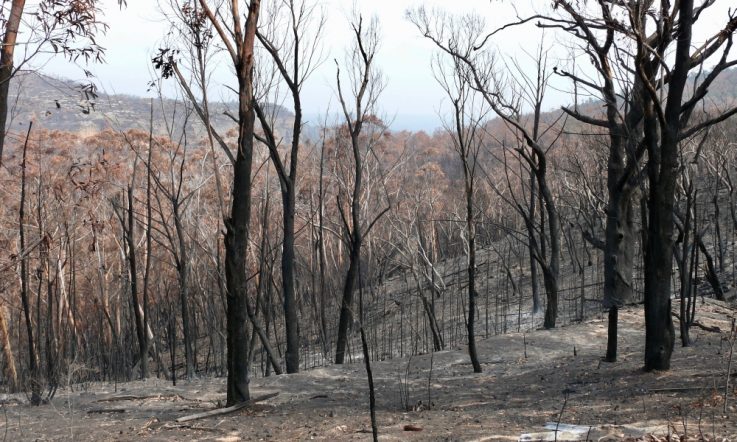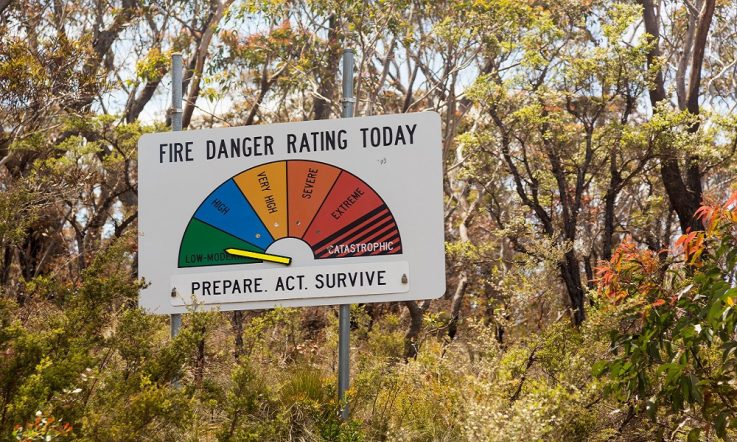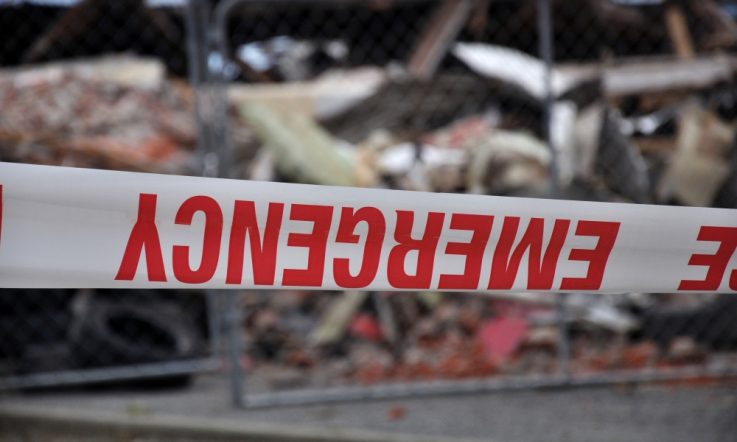Media coverage of the Californian wildfires has evoked reminders of Australia's past bushfires and prompted discussion about the coming season. In today's article Patrice O'Brien, Chief Community Officer at Beyond Blue, discusses why talking about bushfires with your students, no matter where your school is located, can help ease anxiety.
Over the last month many of us have watched with despair at the Californian wildfires, which have generated incredible images of devastation, perhaps the most notable being the Golden Gate Bridge shrouded by a blanket of red. Media coverage of this event has drawn parallels with Australia's disastrous past bushfire season and prompts discussion around the approaching season here.
Images and coverage of disasters can cause anxiety in children and young people. They may perceive they are at risk when they are actually safe; they may remember smoke haze from earlier this year, they may remember being evacuated from their home or while on holiday, or they may be concerned about climate change.
These feelings should be discussed and acknowledged.
Dr Briony Towers is a Research Fellow at the Centre for Urban Research at RMIT. She says discussing being prepared for natural hazards, such as bushfires, is not harmful to children, but avoiding conversations can leave them to worry on their own. Towers says students' misunderstandings, misconceptions and knowledge gaps can be used by teachers as an opportunity to find out what they're thinking, adding: ‘Concerningly, what children imagine is often worse than the reality'.
Involving older students in emergency planning
Harkaway Primary School, in south-east Melbourne, not only embraces discussing risks and preparedness but also involves students in emergency management planning.
'Students were learning about identifying bushfire risk in the classroom and I was working on the school emergency management plan in the office,' Principal Leigh Johnson recalls. ‘Suddenly, I realised that I should be involving the older students in the plan development, allowing them real-life experience and input.'
Having access to the emergency plan enabled students to recognise potential issues and risks that none of the adults on the planning team had considered. ‘They discovered their polyester uniforms were not in keeping with the recommendations around what should be worn for a bushfire evacuation, which is loose fitting clothing made of natural fibres,' Johnson says.
As a result, the school is now considering different options to ensure students have appropriate clothing to wear in the event of bushfire emergency at the school. Johnson says the students gained a sense of importance from being child experts, along with the satisfaction of seeing a risk mitigated. ‘We should allow our students to notice things and have the power to make changes.'
Even if your school isn't directly at risk of bushfires, you may be at risk of smoke haze and poor air quality. Involving children in planning for what to do in this scenario can also give them a greater sense of control, which is good for their mental health. You could also discuss children's holiday plans and promote better understanding of what to do if their holiday spot is affected by a bushfire.
Weaving bushfire education into the curriculum
Towers says students' misconceptions can be addressed by making bushfire education more relevant to their lives. ‘All Australian children and young people need to have access to education about bushfire prevention, risk, preparedness, and response. Educating children about the risk of bushfire in their communities or why there is smoke blanketing the atmosphere far from fire zones can be helpful.'
Strathewen Primary School in rural Victoria is a wonderful example of how to weave bushfire education into the broader curriculum. Students in Grades 5 and 6 complete a bushfire education program which incorporates Science, Art, Civics and Citizenship, Design, English, and Geography. The program has been recognised internationally as best practice in bushfire preparedness. Importantly, it gives children an understanding of bushfire risk, and gives them confidence to share their knowledge with others – creating a sense of empowerment – resulting in a reduction in bushfire-related anxiety.
Towers acknowledges many schools don't have the capacity to introduce such extensive practical programs. ‘But there are some really straightforward ways we can help students feel more empowered and in control, such as teaching them about bushfire warning systems and how they can use those systems to stay safe.'
Psychological preparation
Psychological preparation is also important for students worried about the upcoming bushfire season. The Emerging Minds Community Trauma Toolkit has extensive information and advice. The tips below are from the Toolkit and can be used in the classroom:
- One of the most important ways you can minimise a child's stress and anxiety in an emergency is through coping well yourself.
- Know that feeling worried and stressed is normal, that you can help to manage students' stress by teaching them how to identify feelings, bodily responses and thoughts.
- Practise coping statements like: ‘I can cope with this, we know what to do'.
- Learn breathing exercises to share to slow down breathing and keep calm.
- Listen to students' concerns and check in with any misconceptions or ideas and correct them.
- Know about the risks and what you can do – this will help you to deal with crises more effectively should they occur.
Noticing when students need extra support
Educators are also in a good position to notice signs of anxiety or distress in students as the bushfire season approaches. Teachers may notice changes in a child's behaviour or even their temperament. Symptoms of distress can include difficulty sleeping, trouble concentrating, being irritable and ‘on edge', focusing on ‘dark' and traumatic topics, a sore stomach, headaches and being fearful. Temperament changes can include appearing generally quieter and more withdrawn, or clingier and more fearful. Teachers can listen to children and help them get additional support if needed.
Resources for teachers
The Be You Bushfire Response Program provides targeted mental health support to schools and early learning services affected by the 2019/2020 bushfires. The program is delivered by Beyond Blue in collaboration with Early Childhood Australia, headspace and Emerging Minds.
Through this initiative, 25 specialist support people, called Contact Liaison Officers, are now assisting educators in areas recovering from the summer bushfires, providing tailored local support. For example, at Moruya Public School on the far south coast of New South Wales, the program recently provided staff with a session on self-care and wellbeing. The program also provides a range of free online resources accessible to anyone, including a Bushfire Resource Pack.
Even if you aren't in a bushfire-affected area, you can access many other free Be You resources to help you support the mental health of your students, as well as yourself and colleagues.
Have you discussed the approaching bushfire season with your students? Are you aware of their misunderstandings, misconceptions and knowledge gaps?
Is bushfire education part of your own school’s curriculum? As a school leader, what opportunities exist to involve older students in bushfire and emergency planning?



